The TCL C755 is an entry-level 4K mini-LED that performs far better than some TVs up to twice the price.
We have been reviewing this for several weeks now. At the same time, we have reviewed OLEDs and more expensive mini-LEDs side-by-side, and we are astonished at the quality, performance and image quality, especially for the price.
We have included some specs for the next model up in the range – the C855 – to help you decide.
Price should not be the purchase driver, but it is remarkable for a Dolby Vision/Atmos-capable TV.
| Size | RRP | Seen for (at 18/10/24). May not include delivery. | C855 ‘seen for’ |
| 50” | $1499 | $876 | |
| 55” | $1699 | $947 | |
| 65” | $2299 | $1199 | $1599 |
| 75” | $2999 | $1599 | $2149 |
| 85” | $3999 | $2249 | $2949 |
| 98” | $7999 | $5995 | $7995 |
Dimming zones
Dimming Zones and brightness are the key differences between the TCL C755 and C855. Note that the higher the nits, the more energy is used. The TCL C755 is a 5-star, and the C855 is 3-star.
| Size | TCL C755 Zones/Peak Brightness | TCL C855 |
| 50” | 336/1250 nits | N/A |
| 55” | 384/1300 nits | N/A |
| 65” | 512/1300 nits | 1344/3300 nits |
| 75” | 640/1300 nits | 2160/3500 nits |
| 85” | 880/1500 nits | 2304/3500 nits |
| 98” | 1536/2400 nits | 2160/3500 nits |
The main difference between this and the 2023 C745 is that it uses mini-LED instead of FALD LED (which, along with edge-lit, backlit and direct-lit, I would no longer consider).
Technically, the C855 beats it on specs, but the viewing experience is similar. The C855 is slightly brighter and has more dimming zones. But for Joe and Jane Average, the C755 is a perfect TV for the lounge room, kids’ area, bedroom, etc. And the money you save can go into a decent 5.1.4 Dolby Atmos soundbar.
The cognitive dissonance (CD) factor
When a person’s belief does not match reality, they experience unsettling CD. In this case, I experienced it because after weeks of use and through testing, I could not equate its excellent performance to the price. There must be something I am missing or something that does not add up.
So, I went secret shopping to see what 65” ‘cheapie’ TVs could deliver.
Sure, you can buy a $699 FFalcon (made by TCL, edge-lit, SDR only), a $745 Chiq (edge-lit SDR), a $1100 Hisense Q6NAU (edge-lit, QD, SDR), a $995 TCL C655 (edge-lit, QD, SDR), a $1199 Toshiba (made by Hisense), or a $1295 Samsung Crystal (Edge-lit SDR) for $1295 and many generic brands.
My conclusion was that on a pure picture performance basis none of these was a patch on the TCL C755 mini-LED, the only one in this price bracket that has mini-LED and displays True Dolby Vision content.
So, I threw every test I could find at it. It aced everything, and there are no issues I can identify. My cognitive dissonance is now at peace. Put simply, you can safely buy the TCL C755 or C855 without fear of buying a lemon.
I am unsure how TCL does it, but we hope they keep doing so.
OLED cognitive dissonance
Some of us are lucky enough to afford OLED TVs and appreciate their natural colour accuracy, pure inky black, and brilliant whites. No LCD technology TV, including mini-LED, can beat OLEDs, no matter what the salesperson says.
Last year, I purchased a TCL C845 TV mini-LED to replace a 2016 Sony FALD LED/LCD bedroom TV that died, because I was so impressed when I reviewed it. Ironically, this year, my 2017 Sony FALD LED/LCD second bedroom TV died during the TCL C755 review. So, about two weeks before this review was published, I decided to risk the C745 as it came in smaller sizes than the C855, and I did not want to spend more than $1K.
Yes, I thought long and hard about the entry-level LG B4 OLED Smart TV – excellent picture for a lower price, which costs RRP $2499 (and is on sale for $1999) compared to <$1000 for the TCL C755. The rest is history.
As a videophile, I can tell the difference. I am not comparing LG OLED quality with TCLs (which is pretty good).
To Joe and Jane Average, the TCL C755 (and the C855 for a few dollars more) is a perfect TV and should be considered when not buying an OLED TV.
Australian Review: TCL C755 4K mini-LED TV
Please note that all specs are for the 65”. This model is for Australia and is not comparable to other international models.
| Website | Company page Product Page Manual – More about Google TV |
| Price | See table above |
| From | Harvey Norman (and sub-brands), JB-Hi-Fi, Good Guys, Bing Lee, Betta, Retravision, Appliances Online, Costco and Bi-Rite. |
| Warranty | 3-years ACL |
| Made in | China |
| Company | TCL Technology (originally an abbreviation for Telephone Communication Limited) is a Chinese electronics company headquartered in Huizhou, Guangdong Province. It designs, develops, manufactures, and sells consumer products, including television sets, mobile phones, air conditioners, washing machines, refrigerators, and small electrical appliances. |
| More | CyberShack TCL news and reviews CyberShack TV/AV reviews |
We use Fail (below expectations), Pass (meets expectations) and Exceed (surpasses expectations or is the class leader) against many of the items below. We occasionally give a Pass(able) rating that is not as good as it should be and a Pass ‘+’ rating to show it is good but does not quite make it to Exceed. You can click on most images for an enlargement.
We are also tightening up on grading. From now on, Pass, for example, means meeting expectations for the price bracket. We consider a Pass mark to be 70+/100 with extra points added for class-leading and excellence.
First Impression – Pretty damned good
TVs are big sheets of glass. What makes them better is the fit-and-finish quality and things like a centre pedestal stand and a numeric button remote. Of course, the picture must be acceptable (for the price).
On a fit-and-finish basis, it has narrow bezels, a metal screen edge, and a fully enclosed back with a prominent Onkyo sub-woofer. It can be VESA wall-mounted, but without a cable management system, it sits about 100mm from the wall.
It is 1444 (W) x 894 (H) x 340 (D) x 22.1kg with stand and 1444 (W) x 835 (H) x 70 (D) x 20.2kg without.

Voice remote RC933 – Pass+
Unlike many other brands, TCL has resisted removing the numeric buttons so you can dial up your favourite TV channel instead of wading through an EPG to find it—10 points as this is most important.
It is both IR and Bluetooth and has dedicated buttons for Netflix, Prime Video, YouTube, Stan, Disney+, and TCL Channels (A dedicated TCL FAST Free ad-supported TV comprises live channels plus hundreds of on-demand shows – not tested). It is only missing a backlight.
Setup – Google/Android TV 12 – Exceed
Google/Android 12 TV is easy to use. Log in via your email account, set up Wi-Fi (or Ethernet), and agree to sign your privacy away (all TV brands now want to know everything). TCL also wants you to sign in for TCL added-value features, but you don’t need it for Google TV use. If you want extra privacy, set up a junk Gmail account.
We won’t go into Android TV 12 except to say that it has all Australian digital free-to-air channels and a vast array of apps. It also uses Google Assistant to allow for Google Home and voice control. It has Apple HomeKit and Chromecast support. It also has standardised on-screen reporting of display modes, HDR formats, and surround sound formats – keeping manufacturers honest.
It has enhanced privacy, and you can now delete the unique Advertising ID. You will still get adverts (very few), but they are anonymous. It also has the beginnings of Google Gemini AI.
We have asked TCL for its formal OS update policy. In the EU, it must support TVs with security patches and parts for eight years.
Who makes the mini-LED panel?
The panel is made by a sister company, CSOT, which supplies Samsung and LG (and many others) with Mini-LED and LED/LCD panels.
CSOT also makes mid-range OLED panels using an innovative, lower-cost inkjet printing technology compared to LG’s more costly vacuum deposit fabrication. By mid-2025, we should see its OLED panels in Chinese TV brands.
LG will continue to make premium OLED panels for premium TVs and fro specialist use in signage, automotive, and displays.
Screen – Pass+
The panel uses VA technology, 8 bit+2FRC/1.07 billion colour, Quantum Dot (as do all mini-LEDs; only OLED uses true 10-bit), with a DCI-P3 of at least 94% and 2%/100% peak/sustained of 1300/600 nits.
VA has a higher static contrast of 6000:1 compared to IPS panels at 3000:1. It is certified for SDR, HDR, HDR10, HDR10+, Dolby Vision (and IQ) and HLG. It is coated with a matte anti-glare film. Dimming zones are in an earlier table.
By comparison, the C855 uses an HVA panel (a premium version of VA).
The TV supports one HDMI 2.1 port 4K@144Hz for a PC with a dedicated GPU. We were pleased it supported every refresh rate from 24 to 120Hz using a Surface Pro 9 and integrated Iris Xe graphics in both SDR and HDR modes.
The only downside is that VA has a narrower field of view, which means the more you can sit front-on, the better the image.
Processor – Pass+
The processor is a MediaTek 9653, a.k.a. Pentonic 700 @1.39Ghz, 2.5/20GB RAM/storage. It runs Android TV 12 with a security patch dated 5/5/24. It should get Android TV 14, if not a few more OS upgrades.
By comparison, the C855 uses an AiPQ 3.0 Pro SoC based on the Pentonic 700 and has 3/60GB RAM/storage.
AI – Pass and getting better
TCL overlays AiPC 3.0 and its AI smarts to enhance the processor’s native capabilities. This includes:
- Ai-contrast intelligently divides the screen into multiple regions, applying customised contrast curves to enhance light and dark areas.
- Ai clarity enhances sharpness while reducing noise.
- Ai-colour uses dynamic colour management to deliver vibrant, accurate colours.
- Ai-motion uses BFI (black frame insertion), MEMC (Motion Estimation and Motion Compensation) and VRR (Variable Refresh Rate) to eliminate motion blur and screen tearing.
- Ai-HDR supports a wide range of HDR formats, including HDR10, HDR10+, HLG, and Dolby Vision, and is IMAX certified.
Is TCL AI as good as the acknowledged leader LG? No, but the gap is narrowing fast; frankly, it does not matter on a lower-cost TV.
Ports – Pass+
While more expensive TVs have more HDMI 2.1 ports, this gives you a full HDMI 2.1, 48Gbps VRR/ALLM port for game consoles and PCs.
The eARC port is fine for passthrough processing by a soundbar, but we would not recommend using HDMI ports on a soundbar—connect directly to the TV.
- HDMI 1: 2.1, 48Gbps 4K@144Hz, Uncompressed Dolby Vision (DV), ALLM, VRR, FreeSync Premium Pro
- HDMI 2: 2.0, 18Gbps 4K@120Hz
- HDMI 3 eARC: 1.4b 10Gbps 4K@60Hz
- HDMI 4: 1.4b 10Gbps 4K@60Hz
- Wi-Fi 5 AC 2.4/5GHz and T/R (4 streams)
- 100Mbps Ethernet connection.
- BT 5.0 SBC
- USB-A 3.0, 5V/.9A/4.5W – tested with an NTFS formatted 2TB Kingston XS1000 USB-C 3.2 Gen 2 external SSD – vroom, vroom and will play up to 4K@60fps H.265, H.264, MPEG1/2/4, VC1, WMV, VP8, VP9, AV1, AVS, AVS+ video and MP3/MKV/WMA/AVI audio.
- USB-A 2.0 5V.5W/2.5A supports keyboards, mice, gamepads etc.
- Optical Out
- AV in (RCA composite to 3.5mm)
- RF Antenna
- Missing: 3.5 headphone jack
Gaming – Not Tested
Gamers should fall over themselves to get a 50 or 55” with full 144Hz support at <$1000. It has a respectable 8.5ms Grey to Grey and a dedicated game mode that focuses the TV on gameplay.
Picture Quality Tests – Pass+
Before we get into the tests, remember that this is an entry-level mini-LED with 1300 nits peak, 600 nits sustained, and fewer dimming zones than the C855 (see table at the beginning). The real question is how it performs against similar brand/price TVs, especially as most have less or no dimming zones. SDR (8-bit/16.7M colours) preset modes include:
- Out-of-the-box defaults to Low Power, which is pretty good in rooms with decent ambient light control.
- Vivid is an oversaturated (technically inaccurate) mode that our eyes crave. You may want to back off the backlight a little if you select this mode. It is best for brighter rooms.
- Smart HDR adds faux HDR details to dark and light areas. We never found this setting useful.
- Sports focuses on larger areas of solid colour like a player’s grass field or cricket pitch. It is essentially sRGB colour-accurate
- Movie is cinema mode and is the most colour-accurate. Viewers may find it duller than expected, but you can raise the backlight slightly if you need more brightness. It does not have Filmmaker mode – no real loss.
- Game mode focuses the TV on the image and highlights the details in the shadows, but it sacrifices colour accuracy.
- PC Mode: This appears when you attach a PC, which, as we mentioned earlier, manages the refresh rates very well. It also allows the PC to display HDR/10/+/DA content (if capable).
It also automatically identifies HDR content and lets the metadata take control.
We tested in Vivid mode, which is what most will use. Out of the box, calibration was excellent.
Presets
You may not be able to see the differences between the settings below as you will likely view this on an 8-bit phone screen or desktop monitor. Look for details in the hair, green eye shadow, red lips and jewels. Also, look at the black background for subtle tone differences.






Brightness – Pass
SDR was 479/586 nits – more than enough for SDR content in a bright room.
TCL claims 600 nits sustained and 1300 nits for HDR content. We tested 680 in a 100% window and 1215 (in a 2% window).
Contrary to popular belief that Dolby Vision needs 1000 nits or more, most DV movies show excellent HDR (details in light and dark areas) from around 500 nits.
You can’t see on a phone of PC monitor but black levels are from 4 (dark grey) and white levels are from 234 to 254 – excellent.
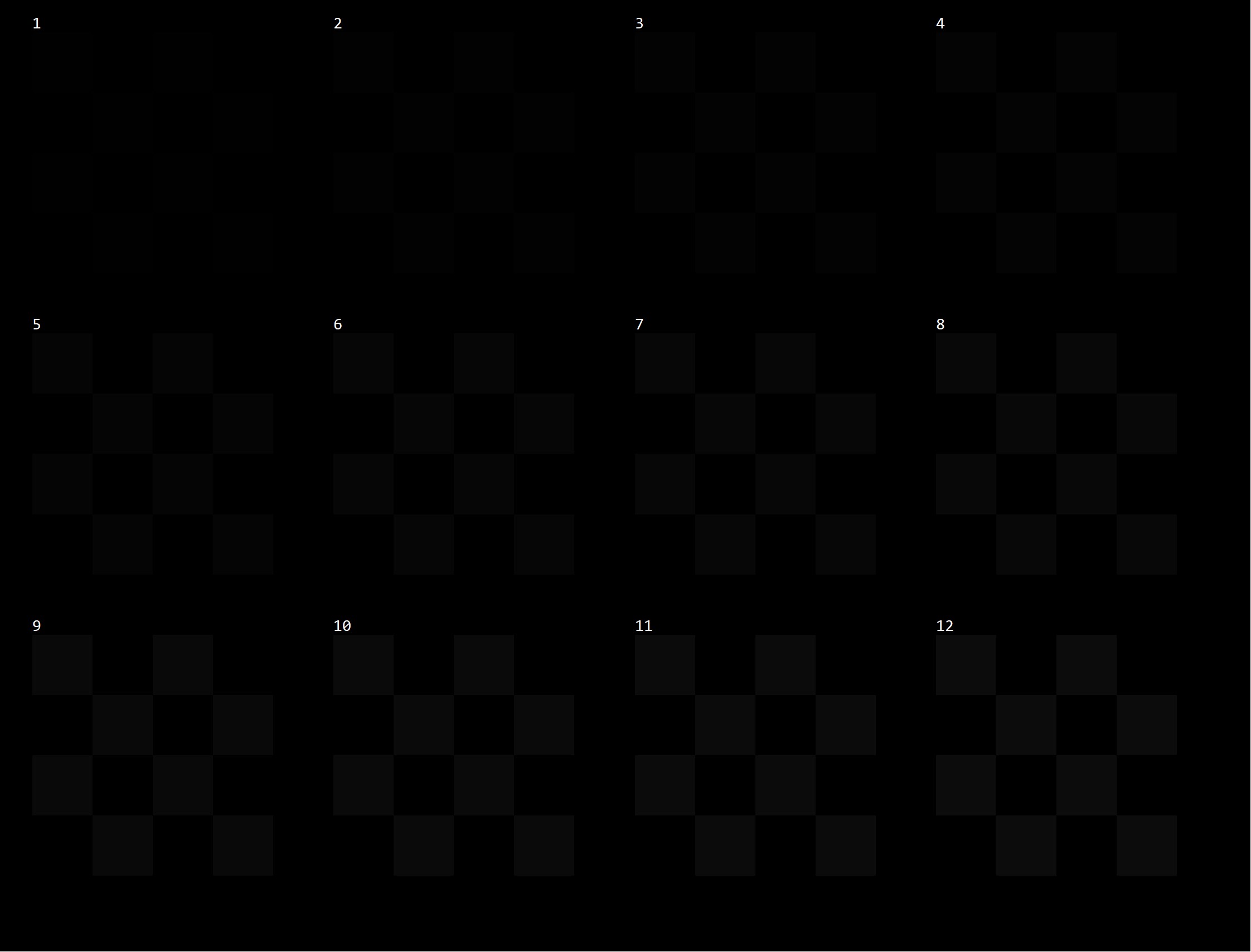

Contrast – Pass
Contrast is the difference between the blackest black and the whitest white, and only OLED exceeds as each pixel is switchable on/off, giving pure black and white infinite contrast ∞:1.
TCL claims 6000:1, which is possible with HDR content and this VA panel. The blacks, while still deep greys are very good.
Typically, it is closer to 1000:1 for SDR Free-to-air content – again, higher than most.
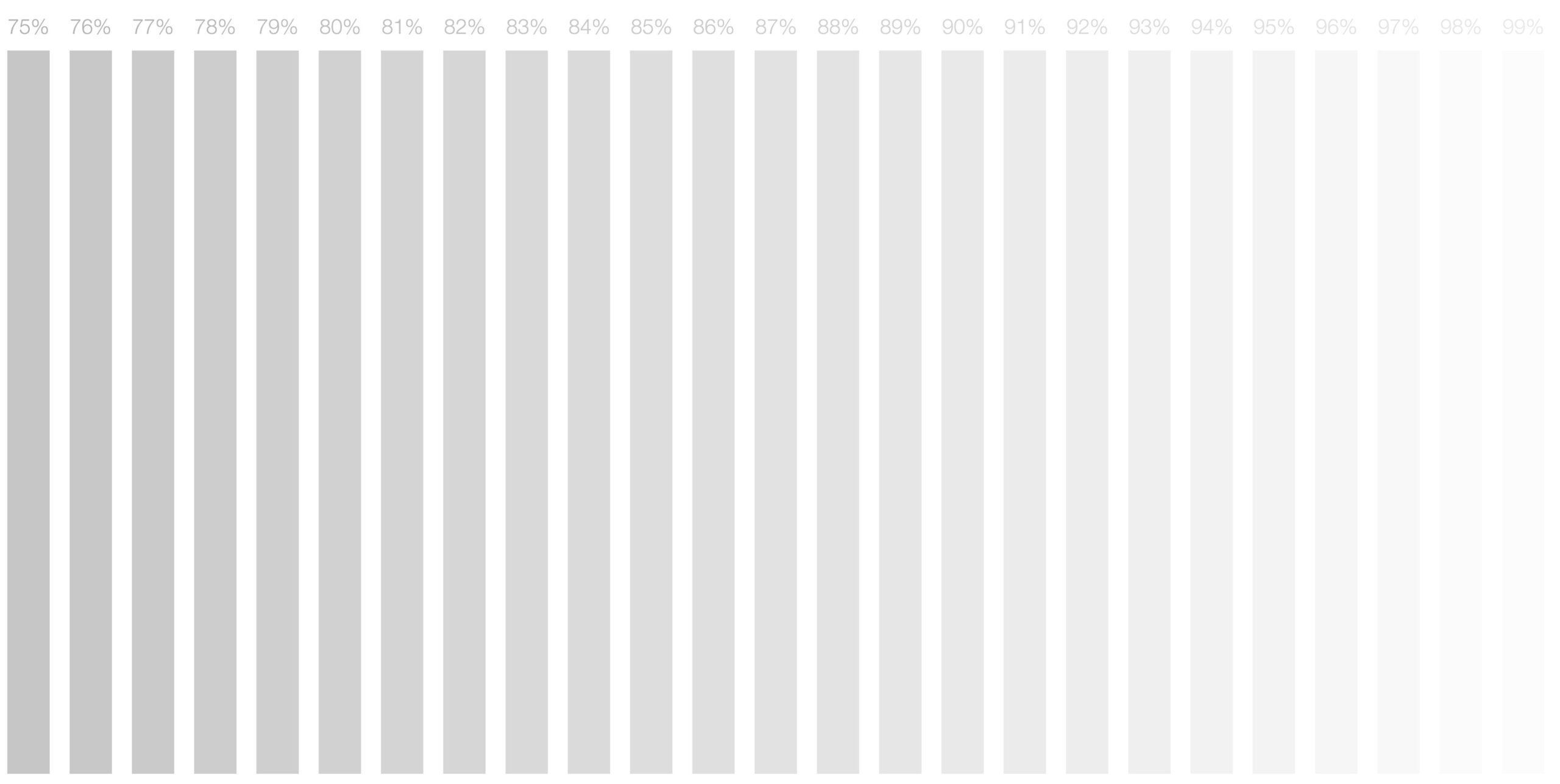

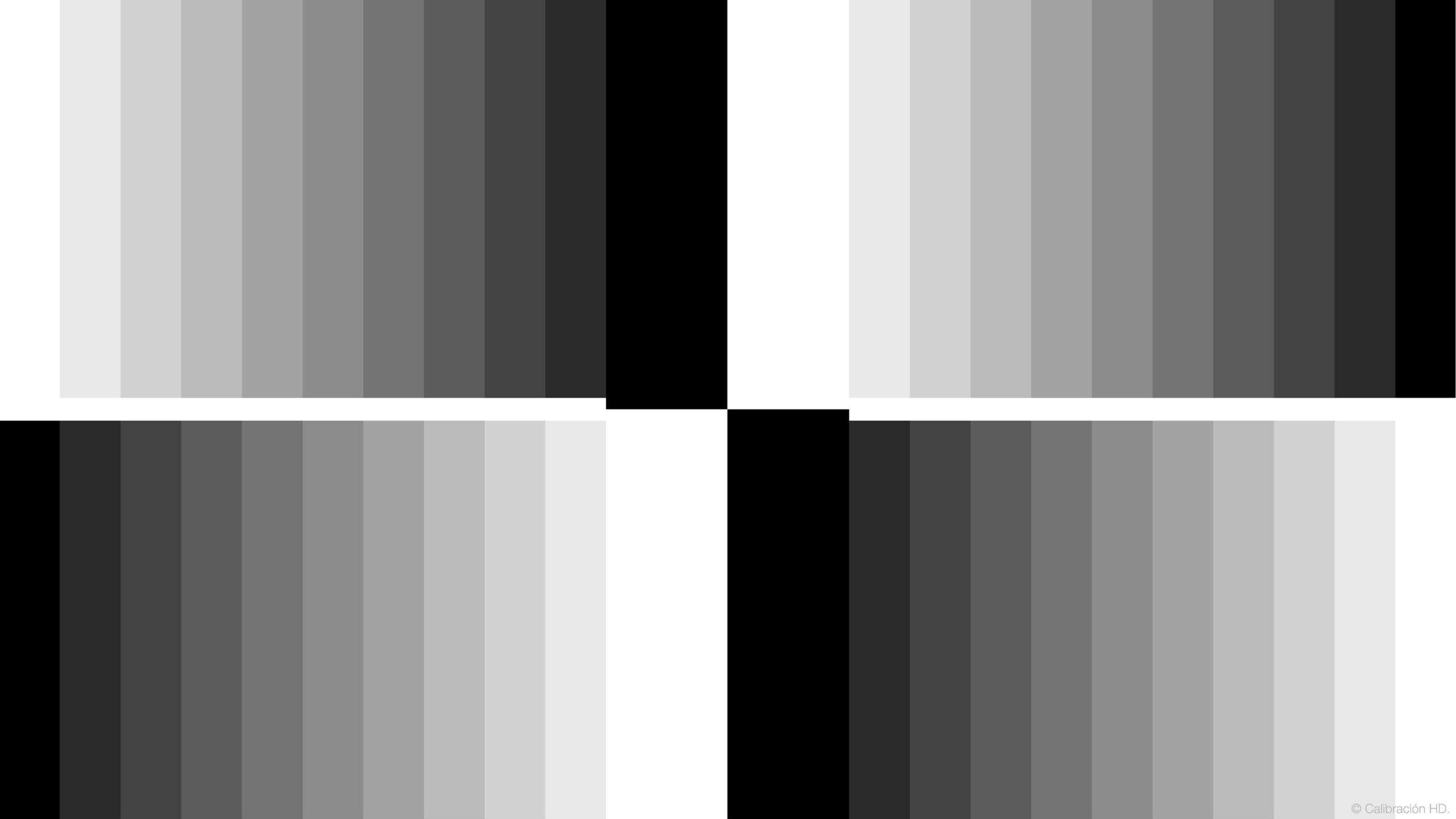
Colour accuracy – Pass
We measured 94% DCI-P3 at 94%, which perfectly matches CSOT’s panel specs. Delta E is 1.8 (anything below 4 is good).


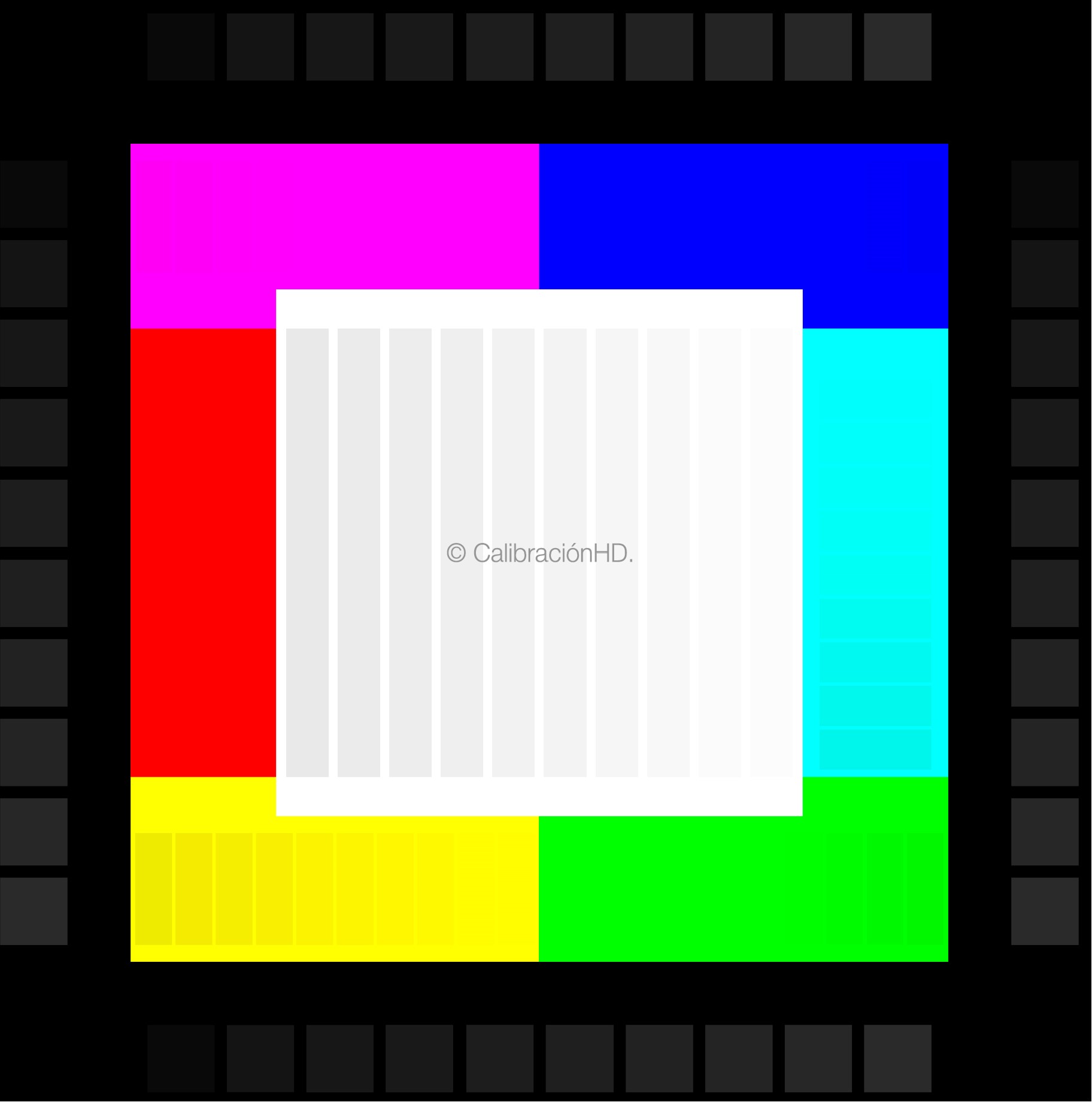
Gradients – Pass
The only place you see the difference between the 8-bit+2FRC and 10-bit (OLED) is in gradients and minor colour banding. The TCL C755 is very good on colour and has minor grey banding.

Blooming – Pass
The TCL C755 65” has 512 dimming zones. There is little noticeable blooming around white text on a back background. We did notice slight blooming where a solid white object crossed diagonally over several zones.
Below is a standard torture test (we remove colours to see the blooming) in which round balls move at 60fps over the screen. The C855 has 1134 dimming zones and about 50% less blooming. Only OLED can beat this.

Motion Smoothing – Pass
It uses variable Black Frame Insertion to smooth fast-moving images. AI-MEMC (Motion Estimation & Motion Compensation) work to reduce the motion judder.

Dirty Screen Effect (DSE) – Pass
DSE in an LCD panel means inconsistent luminance performance across its surface area. It can appear as random splotches, uniform lines, wide bars, and sometimes vignetting (slightly darkening toward the corners).
The TCL C755 exhibited minor vignetting on a 100% white screen but otherwise gave extremely uniform colour and black screens. We could read down to 14-point text.

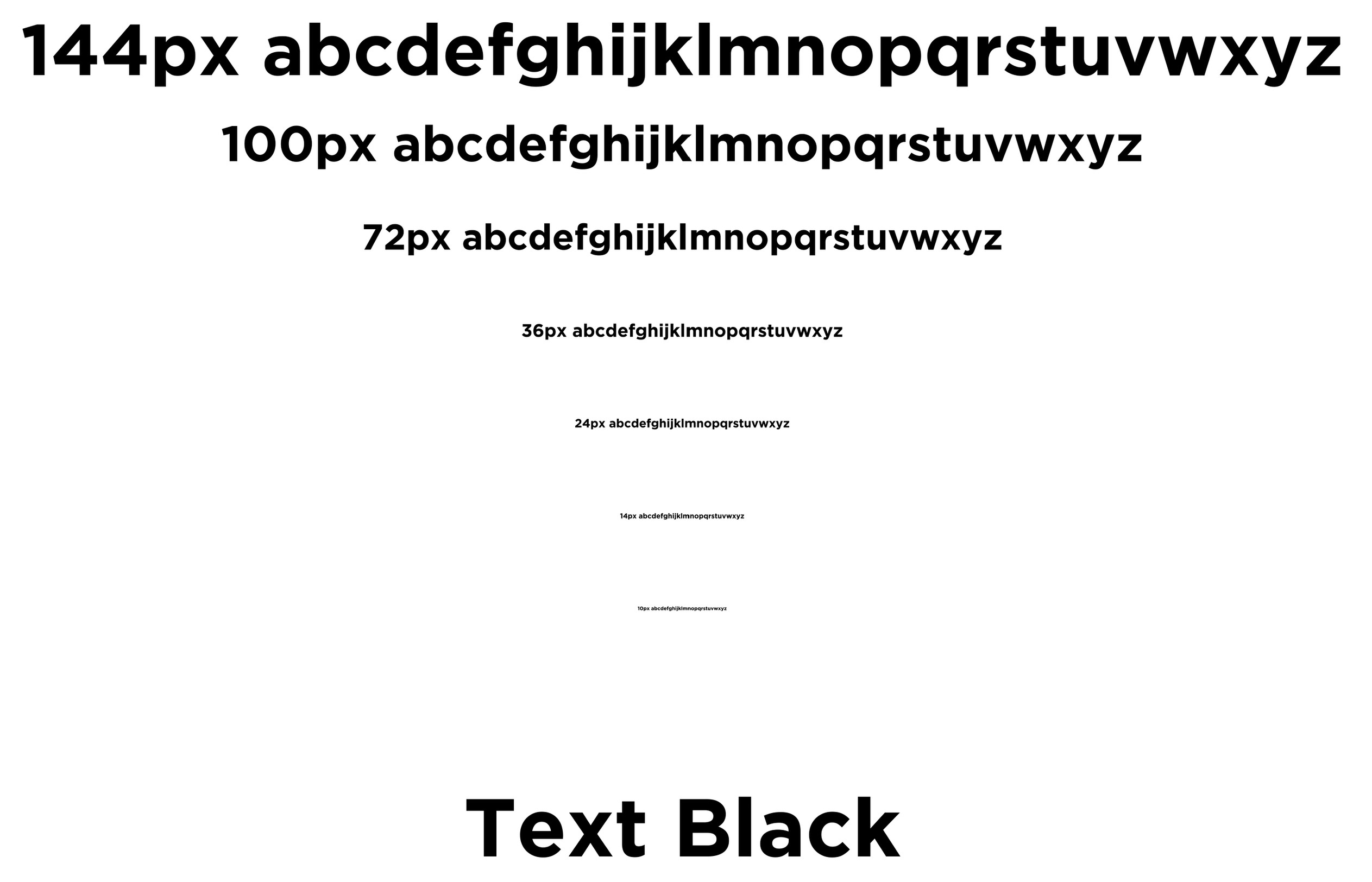
Reflectivity – Pass
The C855 (bottom) is better. Again, you will pay thousands more for the LG G4’s OLED EVO MLA black screen reflectivity killer!


Viewing Angle – Pass
VA panels lose colour after about 45° off angle (135°), but this seems reasonable to about 145°. It affects seating, where most viewers should sit in front of the TV.
Upscale – Pass+
Its AI upscale is similar to the C855, and our Thunderbirds International Rescue 480p test was ‘A-OK, Mr Tracey’ with excellent details, great colours and contrast. This is usually washed out, soft and blurry on lesser TVs.
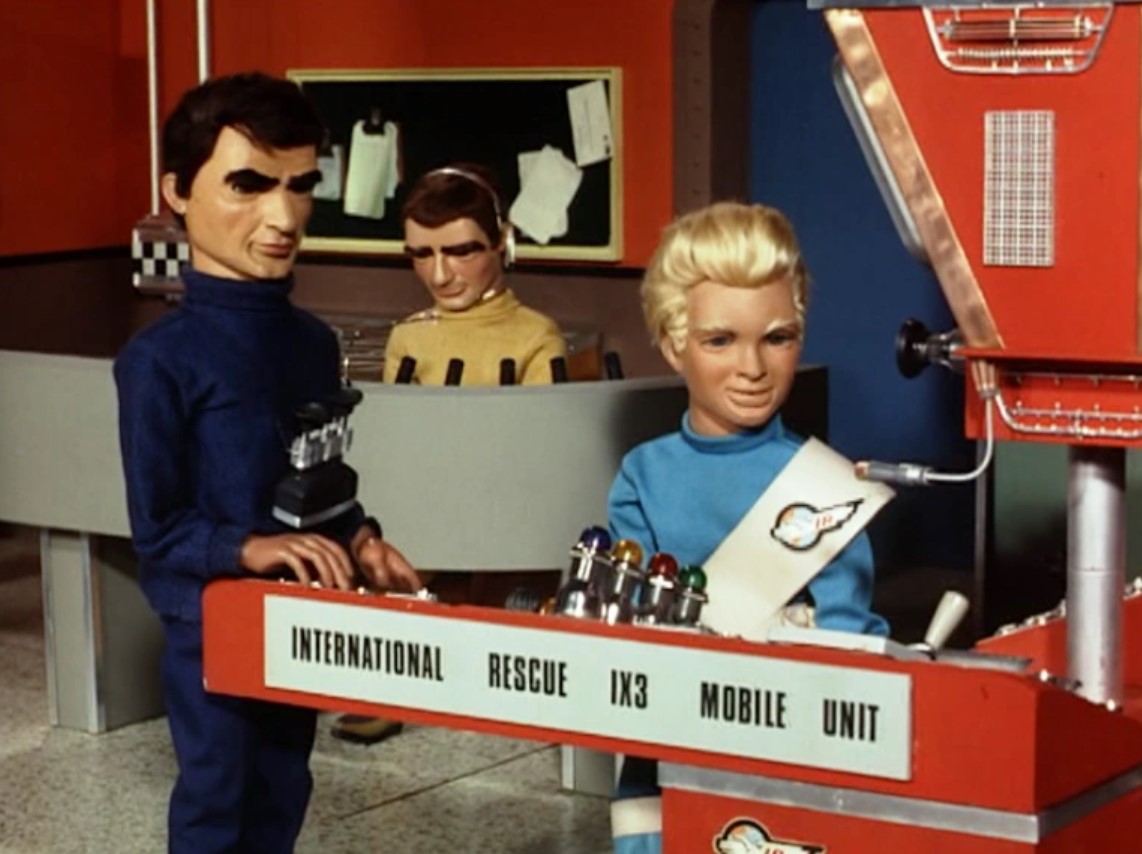

Below are 480/720/1080p upscale and the 4K (no upscale). It needs to pack pixels around the 480p image, making it larger to fill the 4K frame, and the image is softer. 720 is quite good.




Voice control – Pass+
It can support Google Assistant (dedicated mic button on the remote). Alexa and Siri (HomeKit/Airplay 2) require an external smartphone or speaker.
PWM – Pass
It uses Pulse Width Modulation (PWM) to dim backlights, but it is over 25,000Hz and should not affect PWM-sensitive viewers. It has TUV Flicker-free and low blue light certification.
Power – 5.5 star – Exceed
It uses less power because it has fewer dimming zones and brightness than the 3-star C855.
Our measurements on Vivid were up to 100W (4 cents an hour) for SDR and up to 300W (12 cents per hour) for Dolby Vision. On average, consumption is about 60% over an hour.
Sound hardware – Pass
The 65” has a 50W RMS 2.1 speaker system (2 x 15W Left/Right down-firing and 1 x 20W rear-firing Onkyo subwoofer). Presets include Standard, Movie, Music, Voice, Game, Sports, and Dynamic. Most will use the Intelligent Sound (adaptive content) setting.
It decodes all standard mono, stereo, and up to 8-channel (5.1.2 or 7.1) PCM/Dolby Digital and DTS formats. This is downmixed to the 2.1 speakers for faux or virtual surround or DA/DTS spatial.
2D sound (SDR and HDR to 5.1) – Pass
It decodes all standard mono, stereo, and up to 8-channel (up to 7.1) PCM/Dolby Digital and DTS. The sound is very front-centric, and the sound stage is about the same as the TV’s width and height. Overall, it is quite listenable and reaches about 80dB – quite loud.
Dolby Atmos and DTS:X – Passable
It also decodes Dolby Atmos 128 sounds and DTS:X metadata and downmixes to the 2.1 speakers. Let’s just say that it slightly increases the sound stage but is still very front-centric. It is not really immersive sound.
If you intend to watch Dolby Atmos and DTS:X movies, you need at least a 5.1.2 channel TCL C935U 5.1.2 Channel Dolby Atmos Soundbar (RRP $999 but seen as low as $675)
Even better, an X937U 7.1.4 Channel Dolby Atmos Soundbar (RRP $1195 but as low as $875) with dedicated up-firing and front-firing rear speakers.

How does it sound? Fine for SDR
The subwoofer cuts in at 60Hz for mid-bass and builds quickly to 100Hz (high bass). It then remains flat to 7kHz before declining to avoid harshness and flat to 20kHz. 1-5kHz is a bit choppy, indicating clipping to reduce distortion.
This is a neutral signature (flat with a decent mid-high bass)—a flat response that neither adds nor subtracts from the original music.

This is fine for all free-to-air SDR content, but get a soundbar if you want decent surround sound and Dolby Atmos. Read How to buy a soundbar that meets your needs? and Five tips for better TV sound – Dolby Atmos for beginners.
It supports Bluetooth headphones simultaneously with internal TV speakers, suitable for the hearing impaired. It can also have Optical out and TV speakers.
CyberShack’s view – The TCL C755 is the feature, performance and value class-leader
Take a step back and realise this is not denting your wallet. Its performance, features, and value are well ahead of its competitors in this price bracket. Just like its sibling, the C855, it delivers serious performance.
As I said earlier, I bought one for a home bedroom TV, as I did the C845 for my town apartment bedroom last year. Both replaced substantially more expensive Sony FALD TVs that only lasted seven years, and I am not happy😒 with Sony!
My decision was in part driven by bang for buck. But it was even more driven by cognitive dissonance because I am always prepared to spend more to get a better image. I detest watching crap TV images with DSE, haloing, poor colour definition – I could have bought a generic brand or Kogan TV 😣 if I wanted to settle for that.
So for the money, you get the best SDR and HDR performance, colour accuracy, excellent upscale, Google/Android TV, and a three-year warranty (where LG, Sony and Samsung persist with one year).
TCL C755 ratings
We rate within price brackets; if so, this would be 100 100. But for a few hundred dollars more, you can buy the TCL C855, which scored 86/100, so we will rate this in relation to that.
- Features: 80 – TCL has substantially improved the 2023 C745 FALD TV specifications, with mini-LED and dimming zones.
- Value: 90—It offers a lot more than the competitors
- Performance: 85 – The key advantage to this is the better out-of-the-box calibration and presets, meaning Joe and Jane Average can plug and go.
- Ease of use: 85—Google TV is like a comfy pair of slippers. It does everything you need in a relatively easy-to-use interface and has many more streaming Apps than other User Interfaces. A 3-year warranty is excellent.
- Design: 85 – Subtle and elegant and easy to wall mount now with two up-firing speakers.
CyberShack Verdict
TCL C755 4K TV – entry-level mini-LED
From <$1000 to <$6000

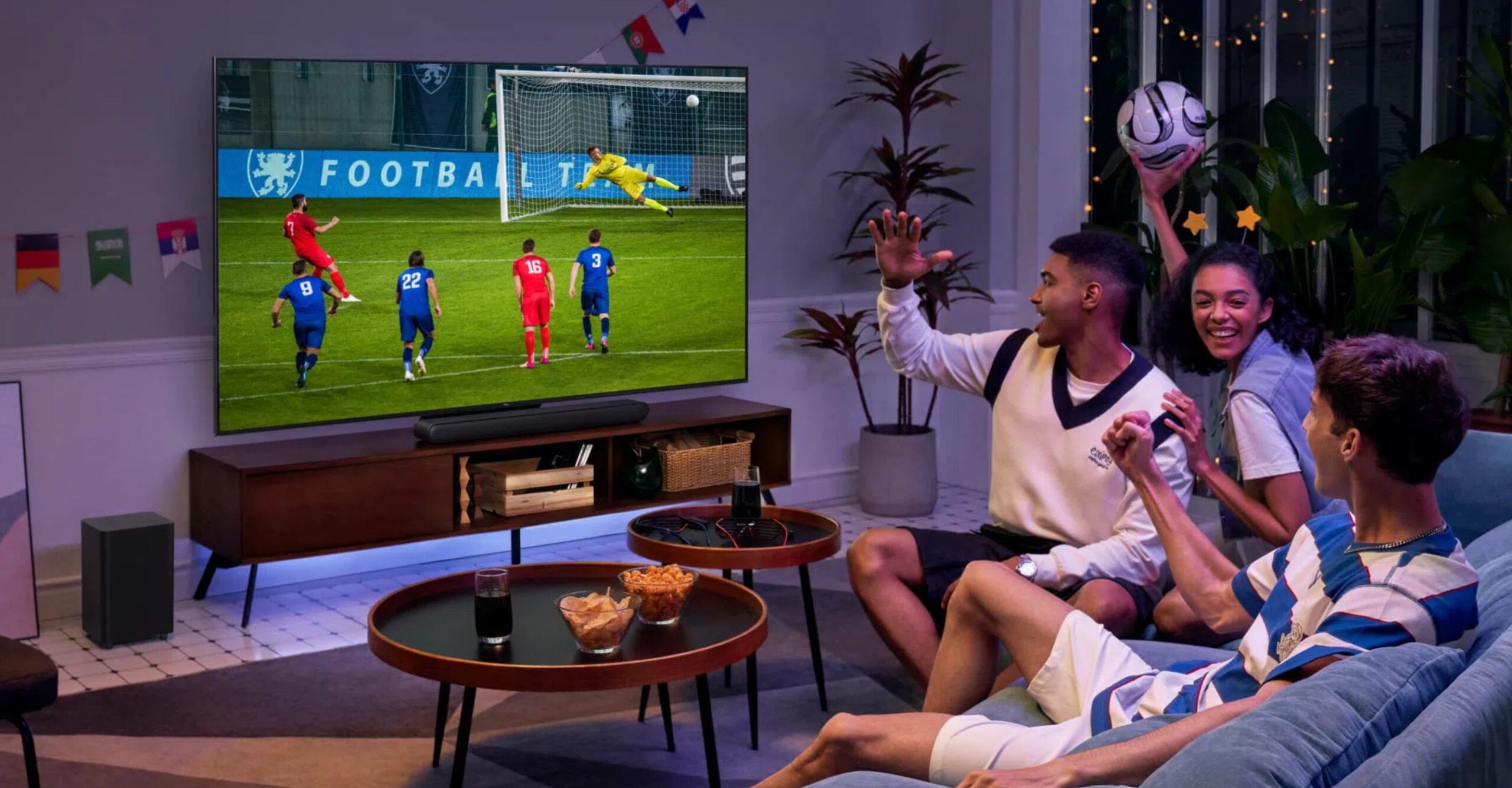






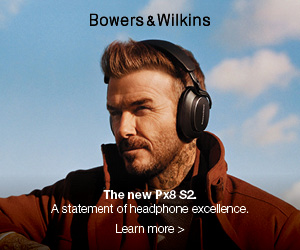
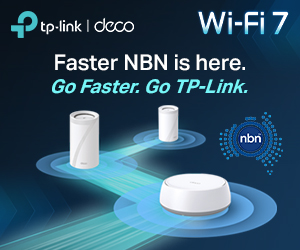

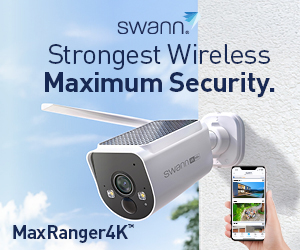

26 comments
Linden
How was the start up time? I had a TCL in the past that took minutes to start and dont want that again.
Thanks for the detailed review.
Ray Shaw
I have a C755 and startup is <10 seconds. It depends on whether it is from full power off or standby.
Linden
Sorry, I commented twice as I wasnt sure the first one went through. Are you saying that your particular TV has <10 second start up from stand by but expect 20-30 just to be conservative?
I also saw it has a fast boot setting, have you tried that?
Ray Shaw
Cold boot from power off about 30 seconds. Mostly booting Google TV
Warm boot from standby <2 seconds
Power Options Quick Start is more about the network staying active when idle. It does not appear to affect the boot time.
Linden
Thanks Ray for your patience with my multiple questions lol. Looking at the C7K which seems to be the successor to this.
Ray Shaw
It is, and we have yet to receive it for review. I found this:
The TCL C755 is generally considered superior to the C7K, particularly for gaming and overall picture quality. The C755 boasts a native 120Hz refresh rate, Full HDMI 2.1 ports, and features like VRR and ALLM, making it a better choice for gamers. It also offers better colour accuracy and slightly better dark scene performance and brightness compared to the C7K. While the C7K might have slightly better contrast due to its HVA panel, the C755’s advantages in other areas make it the more compelling option for most users, especially those prioritising a high-end gaming experience
Linden
How was the startup time for the TV? I had a really slow TCL in the past that took over a minute to start up.
Thanks for the detailed review.
Ray Shaw
From power off (not standby) expect a minute or so. From standby, expect 20-30 seconds. If you have a slow TV do a factory reset (in settings) and a fresh install – it usually works wonders.
Gary Lang
Thanks for the very detailed review 🙂
Rob
Hi thanks for the review! How does this compare with the newer U7Q, I saw the review for that one but it seemed to score lower than the C755. Thanks!
Martin
Great reviews.
Looks like when comparing reviews between TCL c755, TCL c745, and Hisense U7NAU , the C745 got the highest points , despite being the oldest and not even Mini Led .
Would that be correct?
Thanks 🙏 heaps
Ray Shaw
Ratings are objective (and often unforgiving) and take into account price brackets, so a lower-cost TV can be a class leader in one price bracket and a higher-cost cost gets the same points in another bracket. The C755 was the pick of 2024 for entry-level mini-LED, and the 2023 C744 was QLED so it competed with that category. Hisense 2024 U7NAU was good, but TCL Google TV won over VIDAA. I have just reviewed the U7QAU and U8QAU Hisense (the U8 was extremely good) and hope to review the TCL C6K and C7K soon (successors to the C655 and C755). The C855 is now X11K.
Martin
Thanks, Ray, that so true. Thanks for your reply. I am torn between Hisense 75″ U7NAU $1395 and TCL 75″ C6K $1495.
Ray Shaw
The Hisense U7NAU is the older 2023-24 model. The TCL C6K is a new model. If my review of the 2025 U8 and U7 QAU has taught me anything is that there were some pretty big jumps in brightness and zones over earlier models. On that basis the 2025 C6K model is better.
LG lover
I am looking at clearance of C655 to replace the burnt-in OLED B8. How does that compare to C755 here in term of picture quality?
Ray Shaw
The LG B8 would be circa 2018 and, in its day, had the best picture money could buy. TCL offer a good, better, best scenario with the C655, C755 and C855. The C655 is a standard 4K QD TV (not mini-LED) and is there as a price leader. It is Direct LED lit (meaning edge-lit), and you would be disappointed after the inky blacks of OLED. The C755 is a full-array mini-LED and gives a very good picture. But the C855 is way brighter and has way more dimming zones. It would be the pick.
LG lover
TCL and TheGoodGuys had me believe that C655 is direct-lit/back-lit (i.e. directly behind the panel), rather than the inferior edge-lit. That’s the same with TCL C645 of the previous year. Are they just publishing wrong info?
Ray Shaw
I’m sorry—I have not reviewed a C655. It is technically DLED (Direct Lit), which usually means edge-lit from the bottom using fibre optics. Even if the LEDs are behind the panel, regardless, it has no individually controlled dimming zones, and these make an amazing difference to picture quality.
Yatara
855 is quite a bit more than a few dollars
Ray Shaw
Hi Yatara, At the time of the review event sales made the C855 65″ about $200 more and that is what the assertion is based on. There appears to be about $400 difference on the respective 65″ models. Is teh C855 worth $400+ more. Probably not in typical Australian households.
I own (full paid for) a C845 (2023) and C755 (2024) for bedroom TVs and they are superb in that environment. But they don’t quite have the oomph that OLED provides at a much higher price.
Hus ortac
Mate what a awesome review I just bought the TCL C755 65 inch TV I’m so happy to have read your review on it mate it’s awesome for a battler looking for a good product keep up the good work mate cheers
Ray Shaw
Our pleasure – I bought one too as a bedroom TV and its great.
Chas
The article jumps between C755 and C855. Very confusing. Is this intentional or typo error? Thanks
Ray Shaw
I will check and make consistent.
Ali
Why did you stop measuring PWM? I was following this site for this reason.
Ray Shaw
Purely an oversight caused by too many deadlines. It uses Pulse Width Modulation (PWM) to dim backlights, but it is over 25,000Hz and should not affect PWM-sensitive viewers. It has TUV Flicker-free and low blue light certification.
Thanks – I will update the review.